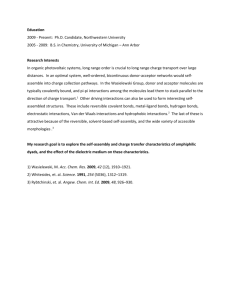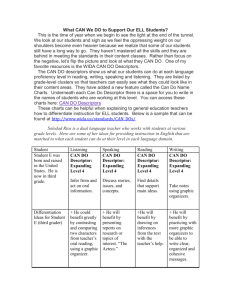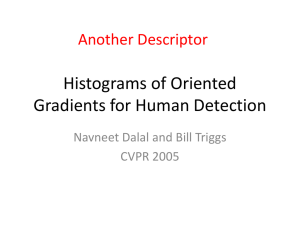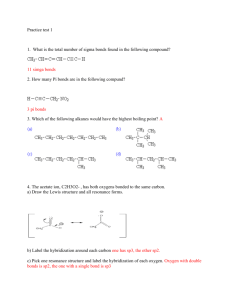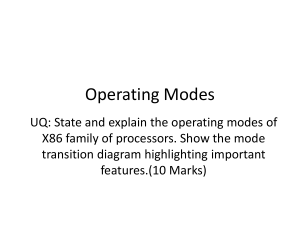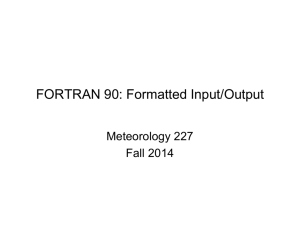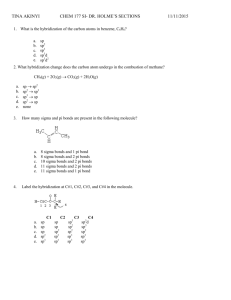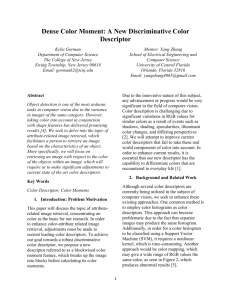Supporting information S11
advertisement
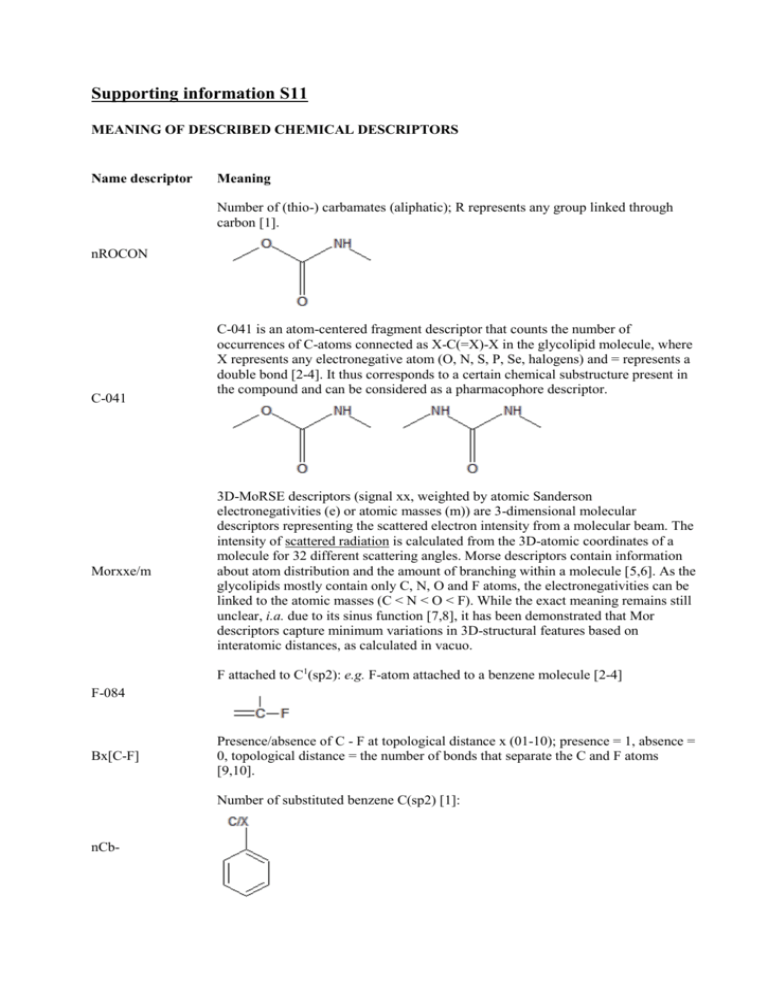
Supporting information S11 MEANING OF DESCRIBED CHEMICAL DESCRIPTORS Name descriptor Meaning Number of (thio-) carbamates (aliphatic); R represents any group linked through carbon [1]. nROCON C-041 Morxxe/m C-041 is an atom-centered fragment descriptor that counts the number of occurrences of C-atoms connected as X-C(=X)-X in the glycolipid molecule, where X represents any electronegative atom (O, N, S, P, Se, halogens) and = represents a double bond [2-4]. It thus corresponds to a certain chemical substructure present in the compound and can be considered as a pharmacophore descriptor. 3D-MoRSE descriptors (signal xx, weighted by atomic Sanderson electronegativities (e) or atomic masses (m)) are 3-dimensional molecular descriptors representing the scattered electron intensity from a molecular beam. The intensity of scattered radiation is calculated from the 3D-atomic coordinates of a molecule for 32 different scattering angles. Morse descriptors contain information about atom distribution and the amount of branching within a molecule [5,6]. As the glycolipids mostly contain only C, N, O and F atoms, the electronegativities can be linked to the atomic masses (C < N < O < F). While the exact meaning remains still unclear, i.a. due to its sinus function [7,8], it has been demonstrated that Mor descriptors capture minimum variations in 3D-structural features based on interatomic distances, as calculated in vacuo. F attached to C1(sp2): e.g. F-atom attached to a benzene molecule [2-4] F-084 Bx[C-F] Presence/absence of C - F at topological distance x (01-10); presence = 1, absence = 0, topological distance = the number of bonds that separate the C and F atoms [9,10]. Number of substituted benzene C(sp2) [1]: nCb- Number of urea (-thio) derivatives [1]: nCONN H attached to C2(sp3)/C1(sp2)/C0(sp); the superscript represents the formal oxidation number. The formal oxidation number of a carbon atom equals the sum of the conventional bond orders with electronegative atoms [2-4]. H-048 Ui Unsaturation index: gives an idea about the degree of unsaturation in the molecule [11] nBM Number of multiple bonds [1] Number of non-aromatic conjugated C(sp2) [1]: nCconj Mp Mean atomic polarizability (scaled on Carbon atom) [5] Number of intramolecular H-bonds (with N,O,F): nHBonds Y1 = B, N, O, P, S, aliphatic group, Y2 = N, O, F. The geometric distance between H and Y2 must be in the range 1 – 2.7 Å [1]. nOHp Number of primary alcohols [1]: ECC Eccentricity: this descriptor gives information about the compactness of the structure [5]. W3D 3D-Wiener index: counts the number of bonds between pairs of atoms and sums the distances between all pairs. This descriptor gives thus an idea about the degree of branching of the molecule [12,13]. Bx[N-N] Presence/absence of N - N at topological distance x (01-10); presence = 1, absence = 0, topological distance = the number of bonds that separate the N atoms [9,10]. Fx[N-N] Frequency of N - N at topological distance x (01-10); topological distance = the number of bonds that separate the N atoms [9,10]. Number of Triazoles [1]: nTriazoles N-073 Ar2NH / Ar3N / Ar2N-Al / R..N..R; Ar represents an aromatic group, .. represents aromatic single bonds as the C-N bond in pyrrole. This descriptor gives information correlated to a pyrrole-type structure [2-4]. Number of aliphatic secondary C(sp2): this descriptor reflects the degree of unsaturation of the glycolipid [1]. nR=Cs C-034 C-034 is an atom-centered fragment descriptor that counts the number of occurrences of C-atoms connected as R--CR..X, where -- represents an aromatic bond as in benzene or delocalized bonds such as the N-O bond in a nitro group, .. represents aromatic single bonds as the C-N bond in pyrrole, X symbolizes any electronegative atom (O, N, S, P, Se, halogens) and R corresponds to any group linked through carbon [2-4]. References: [1] http://michem.disat.unimib.it/chm/Help/edragon/FunctionalGroupCounts11.html (13 November 2013) [2] Viswanadhan, V. N.; Ghose, A. K.; Revankar, G. R.; Robins, R. K., J. Chem. Inf. Comput. Sci., 1989, 29, 163-172. [3] Ghose, A.K.; Viswanadhan, V.N.; Wendoloski, J.J., J. Phys. Chem. A, 1998, 102, 3762-3772. [4] http://www.talete.mi.it/help/dproperties_help/index.html?atom_centred_fragments.htm (13 November 2013) [5] Todeschini, R.; Consonni, V., Handbook of chemoinformatics: from data to knowledge in 4 volumes, 2008. [6] Schuur, J.; Gasteiger, J., Anal. Chem., 1997, 69, 2398-2405. [7] Saiz-Urra, L.; Gonzalez, M.P.; Teijeira, M., Bioorg. Med. Chem., 2006, 14, 7347-7358. [8] Palomba, D.; Martinez, M.J.; Ponzoni, I.; Diaz, M.F.; Vasquez, G.E.; Soto, A.J., Molecules, 2012, 17, 14937-14953. [9] Varnek, A.; Tropsha, A.; Cheminformatics approaches to virtual screening, 2008. [10] Balaban, A.T.; Bonchev, D.; Seitz, W.A., J. Mol. Struct., 1993, 280, 253-260. [11] http://www.talete.mi.it/help/dproperties_help/index.html?molecular_properties.htm (13 November 2013) [12] Mekenyan, O.; Peitchev, D.; Bonchev, D.; Trinajstic, N.; Bangov, I.P., Arzneim. Forsch., 1986, 36, 176-183. [13] Bogdanov, B.; Nikolic, S.; Trinajstic, N., J. Math. Chem., 1989, 3, 299-309.

